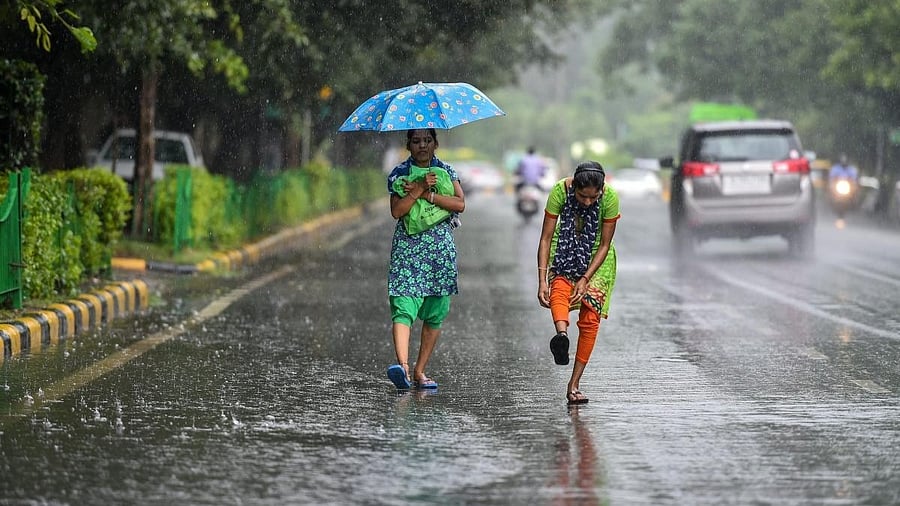
Image to depict southwest monsoon.
Credit: PTI File Photo
Mumbai: Over the last 40 years during the southwest monsoon, India as a whole experienced 29 ‘normal’, nine ‘above-normal’ and three ‘below-normal’ monsoon years, according to a study conducted by the Council on Energy, Environment, and Water (CEEW), an independent policy research institution.
However, analysis at the district level showed that approximately 30 per cent of India’s districts witnessed a high number of deficient rainfall years and 38 per cent witnessed a high number of excessive rainfall years.
Of this, 23 per cent of districts such as New Delhi, Bengaluru, Nilgiris, Jaipur, Kachchh, and Indore witnessed both a high number of deficient as well as excessive rainfall years.
Decoding these trends at an even more granular level, the study found that 55 per cent of tehsils witnessed an increase in southwest monsoon rainfall in the past decade (2012-2022), by more than 10 per cent compared to the climatic baseline (1982–2011).
While the decreasing trends in southwest monsoon were not statistically significant continuously over forty years, it was found that nearly 11 per cent of Indian tehsils witnessed a decrease particularly in the past decade (2012-2022), by more than 10 per cent compared to the climatic baseline (1982–2011).
CEEW's recent study -Decoding India’s Changing Monsoon Patterns: A Tehsil-level Assessment - has been conducted by Shravan Prabhu and Vishwas Chitale.
The study was conducted in the Indo-Gangetic plains, which contribute to more than half of India’s agricultural production, northeastern India, and the Indian Himalayan region.
These regions also host fragile but highly diverse ecosystems. Of these tehsils, approximately 68 per cent experienced reduced rainfall in all months from June to September, while 87 per cent showed a decline during the initial monsoon months of June and July, which are crucial for the sowing phase of kharif crops.
The rainfall associated with the northeast monsoon (OND), which primarily impacts peninsular India, has increased by more than 10 per cent in the past decade (2012-2022) in approximately 80 per cent of tehsils in Tamil Nadu, 44 per cent in Telangana, and 39 per cent in Andhra Pradesh, respectively.
While the remaining Indian states are usually dry during this period, we found a statistically significant increasing trend in the OND rainfall along the tehsils of Maharashtra and Goa on the west coast and Odisha and West Bengal on the east coast.
Further, the analysis of monthly variability indicated that nearly 48 per cent of tehsils in India saw an increased rainfall in October by more than 10 per cent, which could be due to the delayed withdrawal of the southwest monsoon from the subcontinent.